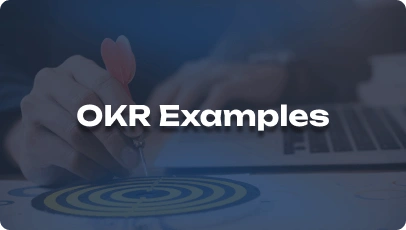As the IT/Data Management industry continues to evolve rapidly, the role of an MIS Manager has become increasingly vital in ensuring effective data management, decision-making, and operational efficiency. Mastering MIS Manager skills can significantly contribute to the success of organizations by providing valuable insights, optimizing processes, and enabling data-driven strategies. In this interview guide, we will explore key aspects of MIS Manager in the context of the IT/Data Management sector, addressing modern practices and challenges.
1. What are the primary responsibilities of an MIS Manager in the IT/Data Management industry?
An MIS Manager is responsible for overseeing data systems, ensuring data accuracy, generating reports, and implementing data security measures to support organizational decision-making.
2. How do you ensure data quality and integrity as an MIS Manager?
By implementing data validation processes, conducting regular audits, and establishing data governance policies, I ensure data quality and integrity are maintained at all times.
3. Can you discuss a recent project where you successfully implemented a new MIS system in an organization?
I led the implementation of a cloud-based MIS system that streamlined data collection, analysis, and reporting processes, resulting in improved efficiency and data accessibility across departments.
4. What key performance indicators (KPIs) do you use to measure the effectiveness of MIS systems?
I track KPIs such as data accuracy rates, report generation times, system uptime, and user satisfaction to evaluate the performance and impact of MIS systems.
5. How do you stay updated with the latest trends and technologies in MIS Manager roles?
I regularly attend industry conferences, participate in online forums, and engage in continuous learning to stay informed about emerging technologies and best practices in MIS management.
6. How do you ensure data security and compliance within MIS systems?
By implementing encryption protocols, access controls, and regular security audits, I ensure data security measures are in place to comply with regulations and protect sensitive information.
7. Can you explain the role of data visualization tools in MIS management?
Data visualization tools help transform complex data sets into visual representations, facilitating easier interpretation and decision-making for stakeholders across the organization.
8. How do you handle challenges related to data migration and integration in MIS projects?
I develop detailed migration plans, conduct thorough data mapping exercises, and collaborate closely with IT teams to ensure seamless data migration and integration during MIS projects.
9. What strategies do you employ to communicate MIS insights effectively to non-technical stakeholders?
I use clear, concise language, visual aids, and real-world examples to convey complex MIS insights in a way that is easily understandable and actionable for non-technical stakeholders.
10. How do you prioritize competing demands and projects as an MIS Manager?
By assessing project impact, aligning with organizational goals, and collaborating with stakeholders, I prioritize projects based on strategic importance and resource availability.
11. Can you discuss a time when you had to troubleshoot a critical issue in an MIS system under tight deadlines?
I coordinated cross-functional teams, conducted root cause analysis, and implemented temporary solutions to resolve the critical issue within the deadline, minimizing disruption to operations.
12. How do you ensure data governance and compliance in an increasingly regulated environment?
By establishing data governance frameworks, conducting regular compliance assessments, and implementing data retention policies, I ensure organizational data is managed in accordance with regulations and industry standards.
13. What role does data analytics play in enhancing MIS capabilities?
Data analytics helps uncover insights, trends, and patterns within large data sets, enabling MIS Managers to make informed decisions, predict outcomes, and drive strategic initiatives.
14. How do you approach data validation and cleansing processes in MIS projects?
By automating validation routines, conducting data profiling, and collaborating with data owners, I ensure data is accurate, consistent, and reliable for use in MIS projects.
15. Can you discuss a time when you had to lead a team through a major MIS system upgrade?
I developed a comprehensive upgrade plan, provided training to team members, and communicated regularly with stakeholders to ensure a smooth transition and minimal disruption during the upgrade process.
16. How do you handle data accessibility and usability challenges in MIS systems?
By implementing user-friendly interfaces, providing training sessions, and gathering user feedback, I address data accessibility and usability challenges to enhance user experience and adoption of MIS systems.
17. What strategies do you use to align MIS initiatives with organizational goals and objectives?
I collaborate with key stakeholders, conduct needs assessments, and prioritize projects that directly contribute to organizational goals, ensuring MIS initiatives are aligned with strategic objectives.
18. Can you discuss a successful data visualization project you led as an MIS Manager?
I spearheaded a data visualization project that transformed complex financial data into interactive dashboards, enabling executives to make data-driven decisions quickly and accurately.
19. How do you approach change management in MIS projects to ensure successful adoption?
By involving stakeholders early in the process, providing training and support, and communicating the benefits of change, I promote a culture of acceptance and facilitate successful adoption of MIS projects.
20. What role does cloud technology play in modern MIS systems?
Cloud technology enables scalable storage, faster processing, and remote access to MIS systems, increasing flexibility, efficiency, and data security in modern data management practices.
21. How do you address scalability and performance issues in MIS systems as data volumes grow?
I conduct performance tuning, optimize database structures, and implement scalable architectures to ensure MIS systems can handle growing data volumes without compromising performance or reliability.
22. Can you discuss your experience with data warehousing and its impact on MIS operations?
I have designed and implemented data warehouses to centralize data storage, improve data accessibility, and support advanced analytics capabilities, enhancing the overall effectiveness of MIS operations.
23. How do you collaborate with IT teams and business stakeholders to ensure MIS projects meet organizational requirements?
By fostering strong communication, aligning priorities, and seeking feedback from both IT and business teams, I ensure MIS projects are developed and implemented in accordance with organizational requirements and objectives.
24. What strategies do you use to address data silos and promote data integration in MIS systems?
I conduct data mapping exercises, implement data integration tools, and establish cross-functional data governance committees to break down data silos and promote seamless data integration across systems.
25. How do you approach data privacy and confidentiality concerns in MIS projects?
By implementing data encryption, access controls, and privacy policies, I ensure data privacy and confidentiality are maintained throughout MIS projects, adhering to regulatory requirements and best practices.
26. Can you discuss a time when you had to lead a team through a major data migration project?
I developed a detailed migration plan, conducted data validation tests, and provided training to team members to successfully migrate data from legacy systems to new platforms, minimizing downtime and errors.
27. How do you leverage predictive analytics in MIS systems to drive proactive decision-making?
By analyzing historical data, identifying patterns, and using predictive models, I leverage predictive analytics to anticipate trends, risks, and opportunities, enabling proactive decision-making in MIS systems.
28. What strategies do you use to ensure data accessibility for users with varying technical expertise?
I provide user training, create user-friendly interfaces, and offer support resources to ensure data is accessible and understandable for users with different technical backgrounds, promoting widespread adoption of MIS systems.
29. How do you measure the ROI of MIS projects and initiatives?
I track project costs, performance improvements, user feedback, and operational efficiencies to calculate the ROI of MIS projects, demonstrating the value and impact of investments in data management and analytics.
30. Can you discuss a time when you had to lead a team through a data governance implementation process?
I established data governance policies, conducted data quality assessments, and engaged stakeholders to ensure a successful data governance implementation process that improved data consistency, accuracy, and compliance within the organization.
31. How do you address data security risks and vulnerabilities in MIS systems?
By conducting regular security assessments, implementing data encryption, and monitoring user access, I address data security risks and vulnerabilities to protect sensitive information and prevent unauthorized access in MIS systems.






